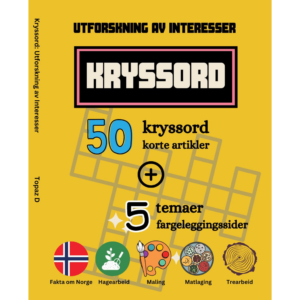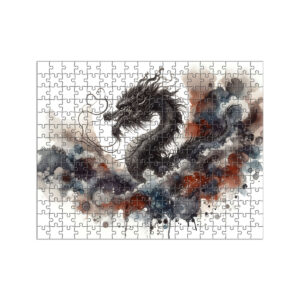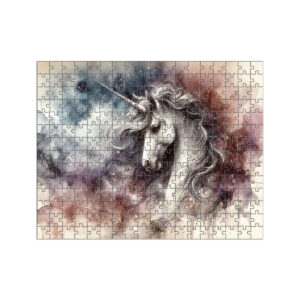
Explore & Play
Discover interesting topics and solve the accompanying crossword puzzle.
Corpse Crossword | Eerie World of Vampires, Zombies, and Mummies
Table of Contents
Start by testing your knowledge with the Corpse crossword, or if you’re not yet familiar with the topic, feel free to read the article first and come back to the crossword later for a fun challenge. Whether you choose to play before or after, both will deepen your understanding of the fascinating world of classic monsters.
Corpse Crossword
You can either fill in the crossword puzzle directly on this page or click the button in the bottom right corner to print it for free.

Vampires, Zombies, and Mummies: How Classic Monsters Have Shaped Horror Culture
Monsters have long haunted our imaginations, with vampires, zombies, and mummies occupying central roles in horror culture. These iconic creatures have not only shaped the genre but continue to captivate audiences across various mediums. Their presence in films, literature, and even video games highlights a deep-seated fear of death, immortality, and the unknown.
Despite being figures of terror, these creatures represent much more than mindless monsters; they embody our collective fears, challenges, and desires. Whether it’s the seductive immortality of vampires, the mindless, relentless hunger of zombies, or the eerie curse of mummies, these figures are deeply tied to the human experience of death and what lies beyond it.
As we explore the rich histories and cultural impact of vampires, zombies, and mummies, we begin to understand why these creatures have endured through the ages, continually inspiring new generations of horror lovers and filmmakers.
I. The Vampire’s Curse: Immortality and Its Consequences
Vampires are arguably the most well-known of the undead. Their characteristics—immortality, seduction, and a thirst for blood—have made them a staple of horror literature and film. Yet, while they are often depicted as glamorous and powerful, their existence is one of eternal torment.
A. The Allure of Immortality
The concept of immortality is both alluring and terrifying, a paradox that has captivated humanity for centuries. Vampires, as immortal creatures, symbolize this tension. On one hand, the idea of living forever without the fear of aging or death seems like an ideal, something many people dream of. However, as the vampire mythos has evolved in literature and film, it has come to represent the darker side of immortality—the psychological and emotional toll it takes on an individual.
From Bram Stoker’s Dracula to modern portrayals in books and films like Twilight and The Vampire Chronicles, immortality is depicted as both a blessing and a curse. Vampires, though seemingly ageless, are often isolated, outliving loved ones and watching societies change in ways they cannot fully comprehend or adapt to. Immortality offers endless time, but with it comes a profound sense of loneliness. The very thing that might seem desirable, eternal life, becomes a heavy burden for these creatures, leading them to question their existence and grapple with the meaning of life.
B. The Moral and Ethical Dilemmas of Immortality
While immortality might appear attractive on the surface, it also brings a slew of moral and ethical issues, especially for vampires who must feed on blood to survive. The curse of vampirism is not just physical—it’s tied to an insatiable hunger that forces them to kill or harm others. This creates a complex moral dilemma, one that challenges the boundaries of good and evil.
In many vampire stories, immortality becomes synonymous with a loss of humanity. Vampires often struggle with their monstrous nature, attempting to reconcile their desire for survival with the human values they once held dear. This internal conflict is a recurring theme in vampire literature and film. For example, in Anne Rice’s The Vampire Chronicles, the character Louis, a vampire, is constantly torn between his need to drink blood and his desire to preserve his moral compass. The curse of immortality, combined with the moral consequences of feeding on others, forces these creatures to live in a perpetual state of tension.
C. Emotional and Psychological Toll
Beyond the moral implications, the psychological toll of immortality is another significant theme explored in vampire lore. Vampires are often depicted as brooding, melancholy creatures who experience deep existential crises. The endless passage of time leads to a sense of detachment from the world around them. As centuries pass, they witness the deaths of people they love, the rise and fall of empires, and the continuous march of history, all while they remain frozen in time.
This psychological burden is especially evident in characters like Dracula, who is portrayed as an ancient being with centuries of accumulated pain and loss. The inability to grow old, the perpetual separation from humanity, and the isolation from the world at large often manifest in depression, anger, and frustration. Vampires in many stories express a longing for the peace that death might bring, but they are cursed to forever walk the earth, unable to escape the darkness of their own immortality.
D. Vampirism as a Metaphor for Humanity’s Fears
The vampire’s curse also acts as a metaphor for society’s fears surrounding death, aging, and the unknown. Vampires, in their quest for eternal life, embody the anxiety of confronting the inevitability of death. Their immortality challenges the natural cycle of life, death, and rebirth that is intrinsic to human existence. They become a symbol of humanity’s desire to avoid death, but they also remind us of the costs that come with trying to outrun it.
The curse of immortality makes vampires tragic figures, and in many ways, they reflect the very human fears we grapple with: the fear of dying alone, the fear of losing meaning, and the fear of time slipping away. The vampire’s existence forces us to confront what it would mean to live forever and whether we could bear the weight of time without losing ourselves in the process.
E. The Vampire’s Curse in Modern Culture
In contemporary horror culture, the portrayal of vampires has evolved to reflect modern anxieties. Today, vampires are often depicted as complex characters, struggling with identity, morality, and their place in the world. While older versions of the vampire were unambiguously evil, contemporary vampires are more often portrayed as tragic figures caught in the existential trap of immortality. Films like Interview with the Vampire and True Blood highlight the emotional and psychological struggles of vampires as they come to terms with their curse.
The ongoing popularity of vampire stories in books, movies, and TV shows speaks to the continued fascination with immortality and its consequences. These stories invite us to consider the price of living forever and what it means for our relationships, our sense of self, and our understanding of life and death. In many ways, the vampire’s curse is a mirror reflecting humanity’s greatest fears and desires, forcing us to question how we would handle immortality if it were ever within our grasp.
II. Zombies: The Undead Rising in a Post-Apocalyptic World
Zombies, unlike vampires, are not creatures of elegance or seduction. Instead, they represent the primal fear of mindless destruction. Often associated with apocalyptic scenarios, zombies serve as metaphors for societal collapse, infectious disease, and the loss of individual identity.
A. The Origins of Zombies in Folklore
The concept of the zombie traces its roots back to Haitian and African folklore, where the idea of the undead was connected to dark magic and spiritual forces. The word “zombie” itself originates from the West African word “nzambi,” meaning a god or spirit, which was adapted in Haitian Creole to describe a reanimated corpse. In these early stories, zombies were not the flesh-eating creatures that modern pop culture has made them, but rather were believed to be souls trapped in dead bodies, enslaved by sorcerers or voodoo priests to do their bidding.
This initial depiction of zombies was tied to real-world fears, particularly fears of being buried alive or having one’s soul taken by a malevolent force. In these early legends, the zombie’s mindlessness was often linked to the loss of personal identity and free will, a powerful metaphor for colonialism and the subjugation of people to a life of servitude and oppression. As zombie lore evolved, particularly in Western culture, the focus shifted from spiritual enslavement to physical reanimation, and the zombies became increasingly horrific in nature.
B. The Zombie’s Rise in Popular Culture
The modern image of the zombie—the reanimated, flesh-eating monster—was popularized by George A. Romero’s 1968 film Night of the Living Dead. This film, and its many sequels, solidified the image of zombies as terrifying, mindless creatures who feed on the living. Romero’s zombies were not the result of magic or voodoo, but rather a scientific experiment gone wrong, making the concept of the undead feel even more terrifying.
Since then, zombies have become a cornerstone of horror culture, appearing in countless films, TV shows, video games, and books. Movies like Dawn of the Dead, 28 Days Later, and World War Z expanded on the idea of zombies as a global pandemic, bringing about a post-apocalyptic world where society collapses, and survival becomes a struggle against hordes of the undead. What began as a supernatural folklore figure morphed into a symbol of societal breakdown, with zombies acting as the harbingers of civilization’s fall.
C. The Zombie Apocalypse: Society’s Collapse and the Fear of the Unknown
One of the defining features of modern zombie stories is the post-apocalyptic world in which they occur. The zombie apocalypse is often depicted as a complete collapse of society, where infrastructure, governments, and social order are shattered, leaving survivors to fend for themselves in a world overrun by the undead. The concept of a zombie apocalypse taps into deep-seated fears of societal breakdown, and the idea that our world, which feels stable and secure, could suddenly disintegrate into chaos.
Zombies in these stories are not just mindless predators; they are a symbol of the world’s collapse, an unstoppable force that consumes everything in its path. The fear is not just about the zombies themselves, but about the world they leave behind—a world of anarchy, desperation, and hopelessness. The post-apocalyptic setting also raises existential questions about the fragility of human civilization and the tenuousness of the systems and structures we take for granted.
In some zombie stories, the apocalypse is caused by a viral outbreak, such as in 28 Days Later and World War Z, where a rage-inducing virus spreads rapidly, turning people into violent zombies. This scenario reflects society’s anxieties around pandemics, disease, and the uncontrollable spread of viruses, especially in light of global health crises like the COVID-19 pandemic. In this sense, zombies act as both a physical and metaphorical representation of societal collapse, chaos, and fear of the unknown.
D. Zombies as a Metaphor for Social and Political Fears
Zombies have always been more than just mindless monsters—they serve as potent metaphors for various social, cultural, and political fears. The idea of people losing their autonomy, becoming slaves to the zombie horde, mirrors anxieties about conformity and the loss of individual agency. In zombie narratives, the survivors must constantly fight not only the zombies but also the social forces that might drive them to the same mindless existence, whether it’s through the breakdown of law and order or the dangers posed by other survivors.
In Romero’s Night of the Living Dead, the zombies were seen as a metaphor for consumerism, with their relentless, aimless wandering echoing the behavior of individuals in a society driven by materialism. Later zombie films, such as Dawn of the Dead, took this theme further, using zombies to represent the mindless consumption of goods and the dehumanizing effects of modern capitalism.
Zombies also reflect the fear of pandemics, as their infection spreads uncontrollably from one victim to the next, much like how a virus might rapidly spread across the globe. This concept was explored in films like 28 Days Later, where the zombie virus represents the danger of biological warfare, viral outbreaks, and the fear of a world where disease spreads faster than society can handle.
E. The Human Element: Survivors and the Fight for Humanity
In the midst of the apocalypse, what makes zombie stories compelling is not just the zombies themselves, but the human characters who must navigate this nightmare world. As much as the undead represent the destruction of society, the survivors’ struggle to retain their humanity is often the emotional core of zombie narratives.
In these stories, survivors often grapple with questions of morality and survival. Should they risk their lives to help others, or do they need to prioritize their own survival above all else? The collapse of society forces individuals to make hard choices, and the fight against zombies becomes a fight for one’s sense of self and humanity. In many stories, the real horror lies not in the zombies, but in how human beings change and adapt in the face of overwhelming crisis. For example, in The Walking Dead, the survivors often find themselves in morally ambiguous situations, facing not just the zombies but also other desperate, dangerous people who are willing to do anything to survive.
At the heart of many zombie stories is a deeper question: can humanity remain intact in the face of such overwhelming devastation? Are people still human if they are willing to kill to survive, or if they give up their values and principles in order to make it through the apocalypse?
F. The Enduring Appeal of Zombies
Zombies have remained a powerful symbol in popular culture because they tap into our primal fears of death, disease, and the breakdown of civilization. As undead creatures that are both terrifying and pitiable, they serve as a mirror for our anxieties about what happens when the social fabric unravels. The appeal of zombies also lies in their versatility—whether as mindless consumers, as symbols of a viral pandemic, or as representations of a lost humanity, zombies resonate with audiences across generations.
Zombies also have a unique way of staying relevant, as each new wave of zombie films and media reflects the societal fears and cultural anxieties of its time. In times of political instability, economic collapse, or public health crises, the zombie becomes a metaphor for the collapse of the world as we know it. Their continued presence in horror culture reminds us of the fragility of our systems, and the constant threat of an uncontrollable force—be it a virus, a social collapse, or the inevitability of death—lurking just beneath the surface of our everyday lives.
III. Mummies: The Curse of the Pharaohs and Ancient Horrors
Mummies bring an entirely different type of horror. Their roots lie in ancient Egyptian mythology, where the preservation of the body for the afterlife was not just a cultural practice but a divine necessity. The concept of mummification and the curses associated with disturbed tombs have fueled countless horror stories.
A. The Origins of Mummy Legends: Ancient Egypt and Beyond
Mummies have long been a central figure in horror, particularly through the lens of Egyptian mythology. The practice of mummification, an ancient ritual designed to preserve the bodies of the dead for the afterlife, emerged as one of the most enduring aspects of Egyptian culture. The Egyptians believed that the soul would journey through the underworld, and that preserving the body in its most lifelike state was essential for the soul’s safe passage to the afterlife. This sacred process ensured that the body would not decompose, allowing the spirit to recognize and reunite with it in the afterlife.
While the Egyptians perfected mummification over thousands of years, other cultures also developed their own methods of preserving the dead, though none achieved the same level of complexity or significance as the Egyptians. From the Incas to ancient China, mummies have been found across the globe, though the term “mummy” itself has become most closely associated with Egyptian burial practices.
The most significant and lasting legacy of Egyptian mummies comes from their tombs and the treasures found within. These tombs, often hidden deep within the pyramids or buried in remote desert caves, were seen as sacred spaces where the wealth and possessions of the deceased would accompany them in the afterlife. This association with hidden wealth, secrets, and the protection of the tomb has been the foundation for much of the mythology surrounding mummies in popular culture.
B. The Curse of the Pharaohs: A Terrifying Legacy
One of the most compelling and chilling aspects of mummy lore is the so-called “Curse of the Pharaohs,” a supposed curse that would befall anyone who dared to disturb the tombs or mummies of ancient Egyptian rulers. This curse gained widespread attention in the early 20th century, particularly following the discovery of King Tutankhamun’s tomb by archaeologist Howard Carter in 1922. After the tomb was opened, a series of untimely deaths and accidents befell those involved in the excavation, leading to rumors of a supernatural curse placed upon the tomb by the ancient Egyptians as protection against grave robbers.
Although many of the deaths and misfortunes can be explained through natural causes or coincidence, the idea of the curse struck a chord with the public, and it became an enduring element of mummy mythology. The curse seemed to add an air of supernatural menace to the mummies—far from being mere preserved bodies, they were now seen as dangerous, vengeful spirits capable of bringing death and misfortune to those who violated their tombs.
The Curse of the Pharaohs also speaks to the powerful connection between death and the unknown. The tombs and mummies were perceived as containing ancient, forbidden knowledge—an insight into a world that no longer existed. By disturbing that resting place, the explorers were not only encroaching on a sacred space, but they were violating a boundary that had been set by the ancient Egyptians themselves.
The lore surrounding the curse has since been woven into numerous films, books, and stories, where mummies often come to life to wreak havoc on those who have disturbed their eternal rest. These stories reinforce the idea that some things are better left undisturbed, and that tampering with the dead comes at a steep price.
C. The Mummy as an Ancient Horror: Resurrection and Revenge
In many modern depictions, mummies are more than just preserved corpses—they are agents of vengeance and terror. The idea of the mummy being resurrected and unleashed upon the living is a staple of horror fiction, with the mummy often rising from its tomb to seek revenge on those who have desecrated its resting place.
One of the most famous examples of this trope is the 1932 film The Mummy, starring Boris Karloff as Imhotep, an ancient Egyptian priest who is resurrected after his tomb is opened. Imhotep’s journey from a mummified corpse to a fully resurrected being is steeped in supernatural horror, as his sole purpose is to avenge the woman he loved in life, who had been reincarnated into the body of a modern woman. This resurrection not only highlights the mummy’s vengeful nature but also ties the ancient past to the present, making the horror feel immediate and personal.
The mummy’s curse is often portrayed as not just an isolated act of vengeance, but a larger cosmic imbalance. In stories, mummies are often reanimated by dark, mystical forces that tap into forbidden knowledge and arcane rituals. The resurrection process itself is frequently shown as an unnatural, dangerous undertaking, with the living person or people who attempt to disturb the tomb inevitably suffering as a result.
The idea of the mummy as an ancient being capable of returning from the dead taps into deep fears of the past—and of death itself. The mummy is not just an ancient relic of a lost civilization; it is a living, breathing embodiment of a bygone era, resurrected to reclaim what was once lost. It is a symbol of a history that refuses to remain in the past, bringing with it the darkness and secrets that time has buried.
D. Mummies in Modern Culture: From Horror to Symbolism
Though mummies began as symbols of death and the unknown, they have evolved in modern culture into more complex figures, reflecting various fears and societal concerns. While the classic mummy remains a figure of horror, it has also become a symbol of the mystery and allure of ancient civilizations. Mummies in films like The Mummy (1999) and its sequels are no longer only evil, reanimated corpses bent on revenge; they are sometimes portrayed as tragic figures or misunderstood beings, haunted by the weight of their pasts. These stories shift the focus from the mummies as mere antagonists to multidimensional characters caught between the ancient world and the modern one.
In some retellings, mummies are treated less as embodiments of evil and more as tragic, misunderstood beings who are the result of ancient rituals gone wrong. For example, the 1999 version of The Mummy features Imhotep not only as a vengeful figure but also as a character driven by love and loss, adding depth to his motives. While he still represents the fear of the ancient world, the character is more sympathetic, illustrating how modern interpretations of mummies often blur the lines between good and evil.
Additionally, mummies have also come to symbolize humanity’s obsession with immortality and the afterlife. The practice of mummification itself was a desperate attempt to hold onto life and preserve it beyond death, reflecting a deep human desire to conquer mortality. Mummies, in this sense, represent both the achievements and the tragedies of ancient cultures that sought to preserve their legacies and defy the inevitable passage of time. As such, modern depictions of mummies often focus not just on horror but on the philosophical and existential implications of life, death, and the desire for immortality.
E. The Influence of Mummies on Popular Horror and Beyond
Mummies have left an indelible mark on the horror genre, with their iconic status only growing over time. Beyond the classic horror films and literature, mummies have found their way into video games, television shows, comic books, and even theme park attractions. The theme of resurrection—an ancient being brought back to life with terrifying consequences—continues to captivate audiences.
One of the reasons mummies remain so enduring is their versatility in storytelling. Whether as ancient beings reanimated for revenge, or as tragic figures trapped in the afterlife, mummies provide an array of symbolic meanings, from the fear of death to the consequences of tampering with ancient power. This flexibility has ensured that mummies, much like vampires and zombies, remain a staple of the horror genre, continuously evolving to reflect the fears and concerns of different eras.
In addition to their popularity in horror, mummies have also made their way into mainstream pop culture, where they appear in comedic films, action-adventure stories, and even animated series. While these depictions often downplay the horror aspects, they still underscore the mummy’s connection to ancient mystery and the supernatural, keeping the figure relevant in both serious and lighthearted contexts.
F. Mummy Mania: Why the Undying Appeal Endures
From classic tales of vengeance to modern reinterpretations as tragic heroes, mummies have captured the imaginations of audiences for generations. They represent the intersection of life and death, the ancient and the modern, and the fear of the unknown. What started as a cultural practice of preserving the dead has evolved into a multifaceted symbol in horror culture—a reminder that death is not always the end, and sometimes the past will rise again.
The continuing fascination with mummies suggests that our fear of death, the unknown, and our desire to preserve our legacies is timeless. As long as humanity continues to grapple with questions of mortality, the mummy will endure as a symbol of both our deepest fears and our most profound mysteries.
IV. The Undead and Their Cultural Impact
The enduring legacy of vampires, zombies, and mummies shows just how timeless these creatures are, continuing to evolve and haunt new generations of audiences. Their constant reinvention in literature, film, and television reflects the human fascination with death and the fear of what lies beyond.
A. The Vampire, Zombie, and Mummy Connection
While vampires, zombies, and mummies are distinct figures, they share common themes of death, immortality, and reanimation. Each one provides a unique lens through which to examine our fears, societal anxieties, and existential questions about life and death.
B. Why These Creatures Endure
The fact that vampires, zombies, and mummies continue to captivate audiences speaks to their fundamental relevance in exploring the human condition. Whether we are facing the seductive dangers of immortality, the mindless destruction of the zombie apocalypse, or the eerie resurrection of mummies, these creatures remind us of the fragility of life and the mysteries that still remain in death.
Conclusion: Embrace the Undying Terror of Classic Monsters
Vampires, zombies, and mummies have earned their places in the pantheon of classic monsters because they speak to universal human fears. They are not just terrifying figures but enduring symbols that help us confront the mysteries of death, immortality, and the unknown. As they continue to evolve, so too does our understanding of our deepest anxieties.
Before you go, dive deeper into the world of monsters by testing your knowledge with a classic monster crossword puzzle! Test your terror trivia now and see how much you know!
Share to...
I hope you enjoy the content.
Want to receive our daily crossword puzzle or article? Subscribe!
You may also be interested in
Share to…
Want to receive our daily crossword puzzle?
-
Jigsaw Puzzles
Chinese Dragon Jigsaw Puzzle – Zodiac Series Art 250 | 300 | 500 Pieces
kr 348,00 – kr 439,00Price range: kr 348,00 through kr 439,00 Select options This product has multiple variants. The options may be chosen on the product page -
Jigsaw Puzzles
Zodiac Ink Dog Puzzle: Artful Elegance 250 | 300 | 500 Pieces
kr 348,00 – kr 439,00Price range: kr 348,00 through kr 439,00 Select options This product has multiple variants. The options may be chosen on the product page -
Jigsaw Puzzles
Majestic Unicorn Watercolor Puzzle 250 | 300 | 500 Brikker
kr 348,00 – kr 439,00Price range: kr 348,00 through kr 439,00 Select options This product has multiple variants. The options may be chosen on the product page

















